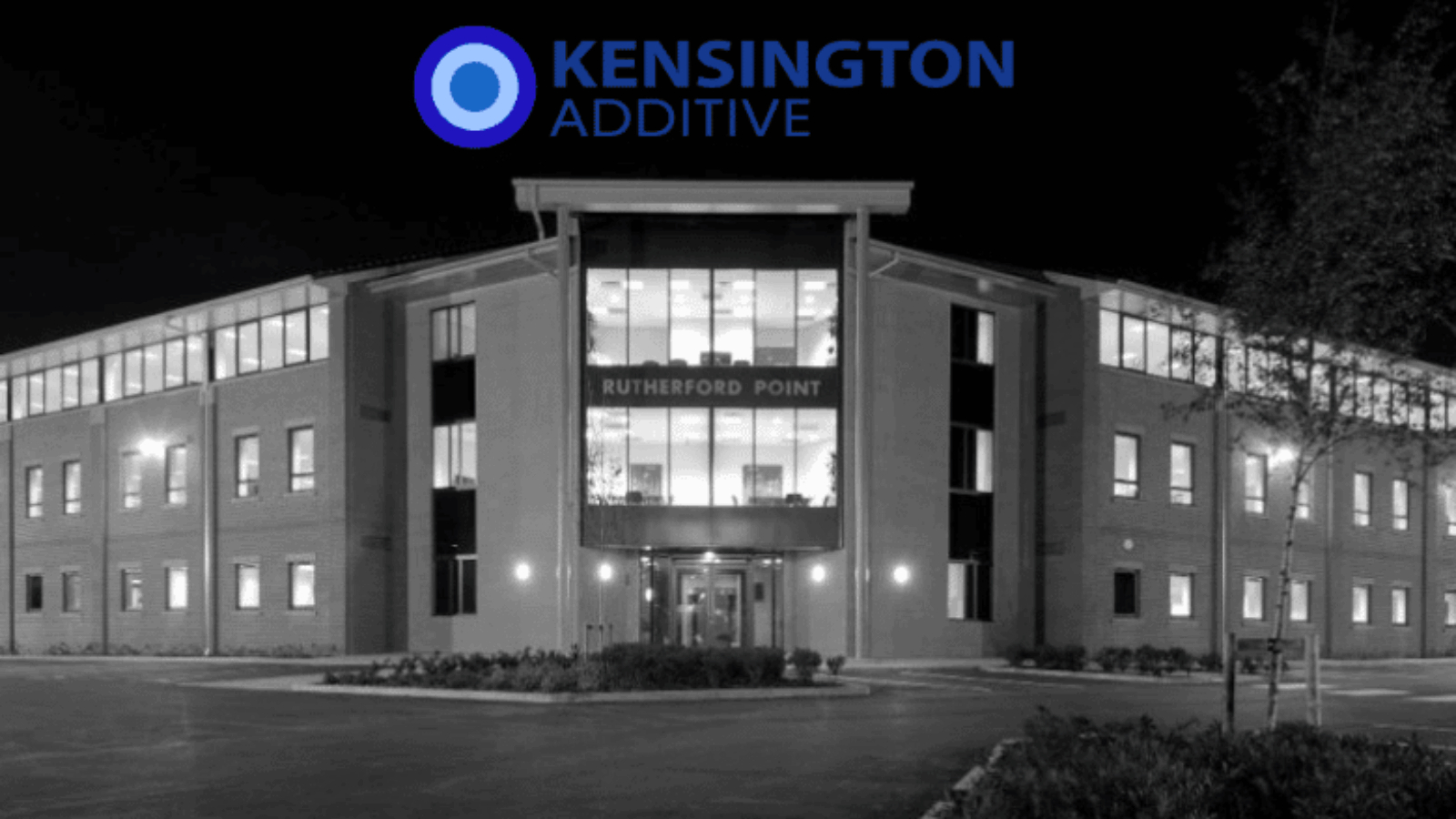Just as industry trends change in the additive manufacturing sphere, so do hiring trends. Economic factors, state of the industry and industry consolidation are among the factors that influence job creation in AM. Kensington Additive, a global search firm specializing in the 3D printing industry, is here to share its insights about how recent events, such as the pandemic recovery and rising inflation, are influencing the state of hiring and how AM’s continued industrialization is changing the nature of job demand.
How has the 3D printing market transformed, adapted and expanded
The additive manufacturing industry has been growing steadily in recent years. This can be seen in the 3D printing market and in the jobs market. There are 78% more active AM jobs in November 2022 compared to the same month in 2020, with hotbeds of 3D printing talent in the US being Los Angeles, San Francisco Bay Area, Greater Boston, Cincinnati, and Texas. In Europe, the major countries are Germany, France, Belgium, Italy, Netherlands, and the UK.
AM has seen this continued growth primarily through increased funding for AM companies and the recovery of the whole industry after the Covid-19 pandemic. In the early stages, the pandemic boosted sales from companies like Siemens and GE, who were among the first to apply their 3D printing resources to produce much-needed PPE, such as face shields. In addition, medical implant specialist Stryker finalized an acquisition and expanded into the Australian market.
There are also broader hiring trends within the AM industry that Kensington Additive has observed. According to Philip Hodson, Co-Founder and CEO of Kensington Additive, much of the AM demand was centered on technical capabilities. Those with the skills to develop AM processes and applications engineers that can demonstrate customer businesses cases, were in the highest demand. “Once companies launched their products to market, however, there was obviously a huge push for commercial professionals,” he explains. “We still see this curve, depending on where companies are in their 3D printing journey.”
AM has matured significantly. It’s moved from the heavily tech-based focus it had in the early stages when technical experts focused on case-by-case prototyping to a shift to a wider approach to applying AM to whole product groups within industrial markets or considering AM as a viable part manufacturing alternative in some cases. Vast sums of investment capital have been pumped into the industry over the past 20 years, and it’s now time to realize the commercial rewards and further push ROI across wider business cases and applications.
This can be seen in the increased demand for companies hiring sales, account management, supply chain and operations experts. In other words, people who can optimize and scale value chains and ultimately help AM companies attain full industrialization.
What will 2023 look like?
As 2022 draws to a close, Kensington Additive is looking ahead to 2023 and forecasts trends in the AM industry. The state of individual industries and global economic trends will influence the growth of additive manufacturing and labor demands.
Looking at Aviation as an example, the company anticipates a continued bounce back from the Covid-19 decline. Looking at the two major manufacturers in the west, Boeing and Airbus, as they seek to recover from the severe global impact of Covid-19, current supply chain issues and production. The two large OEMs are working to rebuild the deliveries with Boeing focusing on the 737 MAX and 787 and Airbus focusing on narrow-body deliveries of the A220 and the A320.

In 2021, the two OEMs combined have delivered 898 aircraft with the aim to significantly increase this in 2022 as they intend to produce more than 1100 aircrafts. Both OEMs are looking to ramp up these figures in 2023 with the goal of achieving full recovery in the coming years. The ripple effect from this into the supply chain will be significant and will surely increase job demand in Boeing’s and Airbus supply chains with a good proportion having strong AM focuses.
Medical and healthcare markets are expected to continue to grow specifically in facets where AM plays a key role such as Orthopedics, Dental and Bioprinting.
Manufacturing on Demand
The Oil and Gas market AM opportunities are still considerable and are expected to increase despite high regulation which causes a cautious approach to new technology adoption specifically in what we see as future challenging economic climate. Industrial tooling continues to grow with many businesses changing their way they manufacture through adopting AM for tooling and fixtures. These applications continue to be high-growth opportunities given their highly customizable characteristics. However, forecasting how PESTLE factors affect demand here is incredibly challenging given the specific case-by-case aspects.
Of course, we must consider the looming energy crisis and dramatic increases in energy costs, particularly across Europe. The ongoing conflict in Ukraine, the drop in Russian gas and fossil fuel exports, and related supply chain disruptions will inevitably influence businesses’ capacity for growth.
Rising interest rates could also limit growth, particularly for companies that borrow or lend money. In the United States, the federal rate is expected to rise to 4.5% by the end of 2022 and reach 5% in 2023. AM companies will therefore be faced with higher loan interest rates, which could lead to budget cuts and redundancies.
Given the global economic landscape influenced by rising inflation rates and supply chain challenges, there is no question that AM job creation will be impacted in the coming year. Already, we have seen that some of the more prominent players in AM industry have become more conservative on their growth strategy. That said, many of Kensington’s SME and startup partners have solid plans for growth for 2023. They are actively looking to expand their teams and further employ the recruiter’s services.
Another influential factor, particular to AM, is the trend of industry consolidation. Mergers and acquisitions in 2021 and 2022 have resulted in potentially fewer opportunities. However, companies with a strong value proposition in their specific AM vertical will continue to thrive in 2023.

What are clients looking for when it comes to hiring 3D printing talent?
As a recruitment specialist in additive manufacturing, Kensington Additive has unique insights into its clients’ requirements. In fact, understanding the nuances of the AM industry equips Kensington Additive to seek out prospects and candidates with specific skills and experiences that meet and even exceed their clients’ expectations.
“We are a long-term partner for clients, helping them attain success throughout their entire recruitment process,” the company says. “Partnering long-term means we can apply a more cost-effective model geared at volume hiring. In other words, the more placements, the cheaper the cost per placement. This approach is ideal for an environment where keeping costs under control is a priority and hiring and growth are key strategic points. In addition, this model is also conducive to a longer recruitment guarantee, which reduces our clients’ risk.”
Costs of a bad hire can significantly impact company trajectory and growth, something which many businesses have little clarity on when you consider all the factors involved. The cost of hiring is only a proportion of the overall cost when you consider onboarding, supervisor time associated with on-the-job training and the unproductive hours associated with not having that position adding value. Breaking these costs down is important when hiring, and selecting the right methodology to hire right is fundamental to achieving a long-term success where the employee maximizes value to the organization. This is an important factor in all organizations but more so in startups where every hire is critical as skills and competencies are wide and varied. It is well documented that replacing an executive can costs a business up to 213% of their salary.
This article was published in collaboration with Kensington Additive.
You might also like:
Siemens and GENERA join forces to accelerate production DLP:
* This article is reprinted from 3D Printing Media Network. If you are involved in infringement, please contact us to delete it.
Author: Tess Boissonneault


Leave A Comment